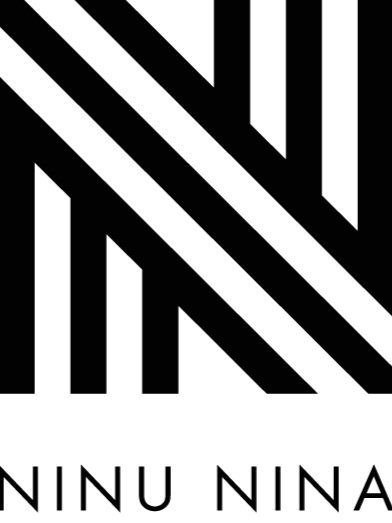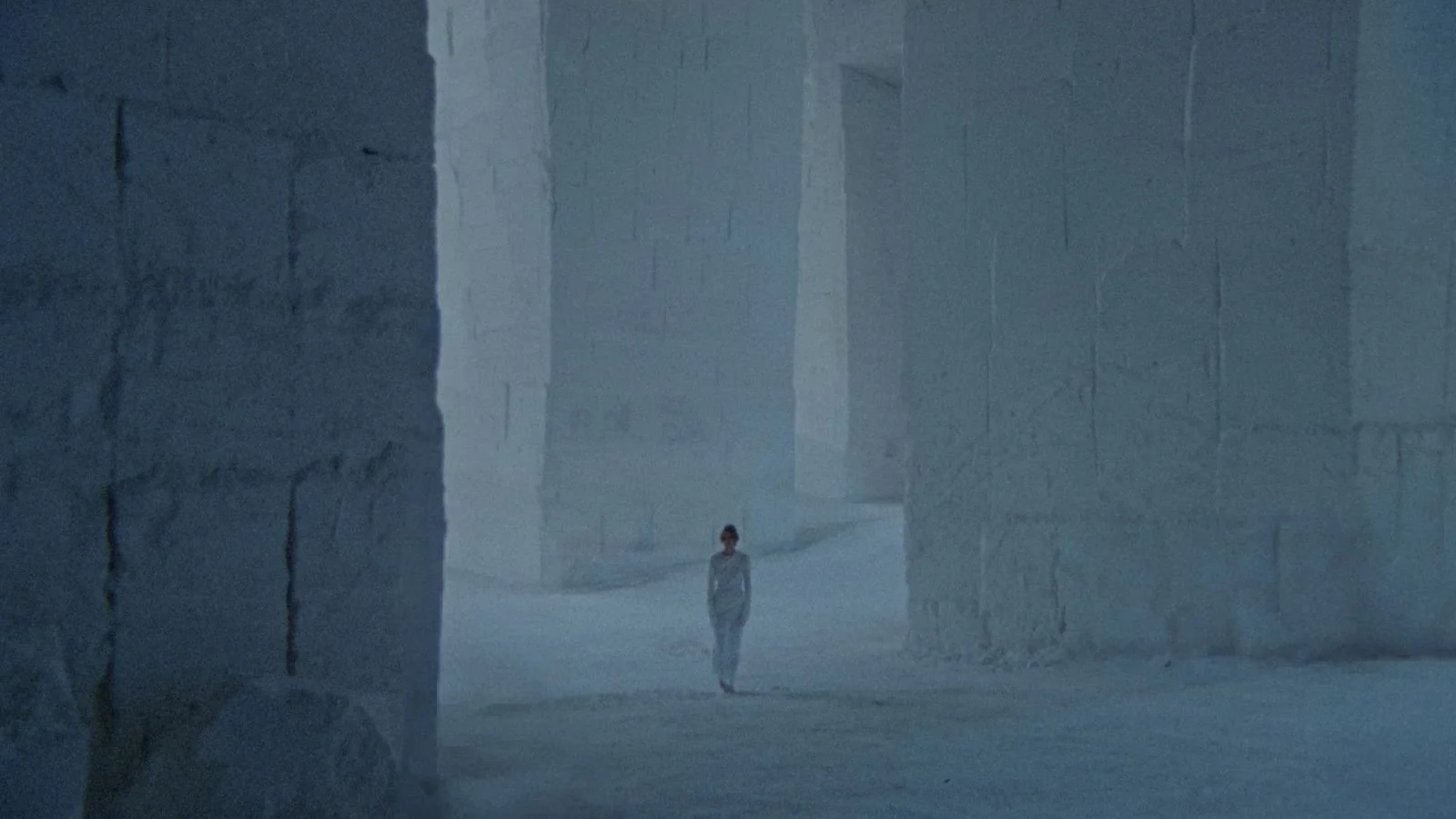Fragments of Meaning: Mandy El-Sayegh's Exploration of Structures and Stories
For Art Abu Dhabi, Lawrie Shabibi is proud to present a solo exhibition by the multidisciplinary artist Mandy El-Sayegh, whose distinctive approach blends large-scale paintings and sculptural installations into immersive experiences. Her work, characterized by meticulous assemblage and layering, interrogates how meaning is constructed and deconstructed in contemporary society.
El-Sayegh’s practice is rich with materials—newsprint, advertisements, anatomy books, calligraphy—seamlessly combined with hand-painted elements and unconventional materials like latex. These elements speak to her ongoing fascination with the intersections between material, corporeal, and linguistic realms. Visitors to the Lawrie Shabibi booth at the fair will step into an installation where the gallery's white walls are disrupted by dense layers of newsprint and screen-printed imagery, veiled in soft white pigment. This immersive backdrop supports her new Net-Grid series, in which silkscreened personal memorabilia and found objects merge with hand-painted grids, suggesting the containment and release of meaning.
These grids represent more than compositional choices; they embody the limits of order, hinting at incompleteness and instability. Such motifs resonate with El-Sayegh’s philosophy that fully contained narratives are illusory. Each slippage in her grid mirrors the excess and overspill of reality, exposing the tension between structure and chaos.
Among the works at the Lawrie Shabibi booth is her Reverse White Grounds series, which builds upon her earlier White Grounds by subverting traditional painting foundations. Here, pigments bruise through white surfaces, bringing life and imperfection to her canvases. The intrusion of color, particularly reds and purples, evokes the vitality of bodily tissue, aligning with El-Sayegh’s exploration of anatomy and the physicality of existence. With screen-printed maps and grid lines, these works expand their symbolic scope to the political realm, contemplating how nation-states and power structures exert control.
Additionally, the Gateway exhibition at Art Abu Dhabi, separate from the Lawrie Shabibi booth, features another layer of El-Sayegh’s multifaceted work. In this exhibition, her commitment to assemblage—rooted in layering and combining fragments—extends into powerful statements of solidarity and protest. This is particularly embodied in the mannequin dressed in martial arts-inspired garments, which is part of the Gateway show. The garments, recalling the taekwondo uniforms popular among Palestinians in the 1970s, symbolize acts of defiance and protection, paying homage to the artist’s father’s era. Through this piece, references to Frantz Fanon and solidarity movements between Puerto Rico and Palestine come alive, rendered through a process of selective scansion that captures fragmented narratives.
Both presentations, at the Lawrie Shabibi booth and in the Gateway exhibition, offer unique insights into El-Sayegh’s deeply layered approach to art, each exploring the overlapping realms of body, material, and socio-political context.
Q&A with Mandy El-Sayegh:
Q: How has your multicultural background influenced your artistic perspective and the themes you explore in your work?
I am unsure how my multicultural background has influenced my artistic perspective and themes, because I do not have the distance to objectify myself. I believe an artist’s practice develops over time, themes emerge retroactively. If I am too consciously aware of those things, then the work will change, and I am not interested in narrativization. I am more interested in methodology and assemblage, rather than in the business of storytelling.
Q: Your art often delves into systems of order and boundaries of mediums. What motivates you to explore these themes, and how do they relate to your personal experiences?
Mandy El-Sayegh: I find these systems intriguing because their repetition and use make them internalized as truths that go unquestioned. By dissecting language, such as headlines, and reassembling them, I aim to highlight how narratives are constructed and where power resides. The absurdity that arises from comparing these constructs to other lived realities underscores how compartmentalization operates within capitalist structures. This dissection isn’t just an external critique—I acknowledge my own entanglement within these systems, which makes the exploration even more necessary.
Q: Could you share insights into your creative process, from the inception of an idea to its realization?
A project normally starts with a conversation, and sharing references with the curator or writer and, through those conversations, I start to pull from my archive and look at research. It is very much a research-based practice, a laboratorial practice, in that I let things interact with each other. I will then find a motif from that research to sit within the robust systems I have already established in my practice, that recur – those holding systems. And I see what emergent form comes out of that – from the motif and its holding structures: the Net-Grid painting, the dimensions of a cube for a performance, or a morgue table, for example.
A lot of the practice, which isn’t seen, is my archive. My work is pulled from that record-taking of invisible histories.
Q: What are your greatest inspirations or influences?
There are too many to state or even to remember. Because I didn’t grow up going to galleries, or with art, all the obvious – to other people seemingly obvious – references didn’t really have a formative effect on me, more than, say, how my father had his own practice which he was unaware of as an artistic practice. I am most influenced by the ways people close to you find reason for living, his being his amateur radio practice, and his calligraphy practice, when chronic illness has compromised his body. Creative ways for people to be connected to other people, and the world. Amateur radio, for example, has its own community. As I came out of art school I went into care work, working with people on the autistic spectrum. That was also a way to find meaning and be with others.
Q: You've participated in various exhibitions globally. How do you approach presenting your work in different cultural contexts?
When showing in different regions, each region presents different challenges, and often that challenge, or those limitations, becomes a central element in the work. Censorship is a contingent which exists in every area, in one form or another, and working around that seems to be the crux of the work, actually. How can you use aesthetics to speak of an ‘unsaid’? To an extent, each exhibition is an experiment in legibility, legitimacy and assimilation, the feedback that comes from that then feeds the next project, or my ability to shapeshift, so it is very relational in that sense. And sometimes things don’t work out. If there is something I missed – if using this newspaper here is not acceptable, or these words here. I use my father’s and my uncle’s calligraphy without knowing what they say, even. That in itself is a risk that I often take. Or, how certain bodies are allowed to be visible or not. So I approach it respectfully, but also experimentally, so as not to compromise the integrity of the practice.
Q: What challenges have you faced in both your artistic and personal journey, and how have they impacted your work?
I think the whole practice has always looked at issues of censorship adaptation, assimilation, legibility and legitimacy. That being said, it has gotten a lot worse recently, since October, so I have to amp these strategies up. Historically, my work has always smuggled in these obfuscated histories, and now I have to use other devices and abstractions, or subtractions, to deal with the current moment, where things that once could exist are now seen as inflammatory. Certain subjectivities and certain existences are seen as inflammatory, which is a very sad state of affairs. Nonetheless, this is nothing in comparison to the people being burned alive.
El-Sayegh’s practice underscores the vital role of the artist as a disruptor, archivist, and storyteller. Through her immersive installations and meticulously constructed works, she challenges the neutrality of traditional spaces and the perceived stability of historical narratives. By weaving personal and political fragments, El-Sayegh not only reclaims space for marginalized stories but also prompts deeper reflections on identity, power, and the structures that shape our world. Her work reminds us that the artist’s role goes beyond creation; it is an act of resistance and reimagining, forging connections that bridge cultures and histories, and inviting audiences to reconsider what is seen, known, and valued.
Follow on instagram
Mandy El-Sayegh, Net-Grid (Red Emma), 2024, Oil and acrylic on linen with collaged and silk-screened elements, 235 x 225 cm. Photo credit: Damian Griffiths. Courtesy the artist and Lawrie Shabibi, Dubai.
Mandy El-Sayegh, Net-Grid (tread, crosshatched) (detail), 2024, Oil and acrylic on canvas with collaged and silkscreened elements, 235 x 225 cm. Photo credit: Damian Griffiths. Courtesy the artist and Lawrie Shabibi, Dubai.
Mandy El-SayeghPsychic Self-Defence, 2024Installation: oil and acrylic on canvas; hanging cotton latex skins with collaged and silkscreened elements; textile garmentDimensions variablePart of 2024 Gateway: Otra Orilla (Another Shore), Manarat Al Saadiyat, Abu Dhabi Photo by Ismail Noor, Seeing Things. Courtesy the artist and Lawrie Shabibi







